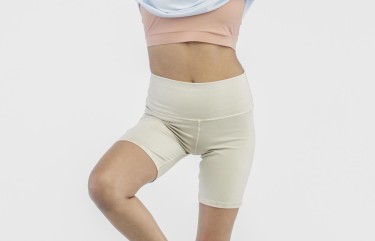Emsella: What You Need to Know
Pros & cons
How much it costs
What to expect
How soon you feel results
How long results last
How effective it is
Fast facts
The BTL Emsella is a noninvasive treatment for stress urinary incontinence. It uses high-intensity focused electromagnetic technology (HIFEM) to stimulate muscle contractions in your entire pelvic floor—the layer of muscles stretched like a hammock below the bladder, uterus, and bowels—and neuromuscular control. Strengthening your deep pelvic floor muscles can also help restore your bladder control.
This noninvasive treatment involves sitting fully clothed on the Emsella chair (sometimes called the "Kegel throne") for about 30 minutes.
The seat of the chair emits electromagnetic energy, which causes you to involuntarily contract your pelvic muscles 11,200 times in a single session. The contractions are painless but more powerful than regular Kegel exercises. There’s no downtime afterward.
Emsella works best as a series of six sessions scheduled twice a week, with follow-up sessions every 6 to 12 months. Some patients see results after a single session, with improvements over time.
Pros
- It’s a nonsurgical, noninvasive solution—so much so that you don’t even have to remove your clothes for the treatment.
- Average treatment time is about 30 minutes, with no downtime afterward.
- The treatment isn’t painful, though you may feel a tingling or “pulling” sensation.
- Emsella is FDA-approved for treating both stress urinary incontinence (due to sneezing or laughing) and overactive bladder. It may also help curb urge incontinence and bladder leakage.
- Not having to worry about leaks or running to the bathroom can be a huge improvement in quality of life for men and women of any age.
- Some patients also report an improvement in sexual response.
Cons
- It's not a one-and-done procedure. The typical treatment plan is a series of six Emsella sessions twice a week see results, plus follow-up treatments every 6 to 12 months to maintain them.
- You may need more than the recommended six sessions, depending on the degree of weakness in your pelvic floor musculature, to see a significant improvement. One member didn’t notice any improvement with six alone—and additional sessions may drive up the cost.
- Average Cost:
- $1,478
- Range:
- $600 - $2,800
How much you pay will depend on your provider’s level of experience and where they practice.
Because this is an elective procedure and not considered medically necessary, insurance doesn’t cover it. Purchasing a treatment package tends to be more cost-effective than purchasing treatments individually.
You’ll begin with a consultation with a board-certified doctor, who’ll assess whether Emsella is right for you based on your history of urinary incontinence, the type of incontinence you experience, and what its cause may be.
“While it primarily has been used for stress incontinence, there is evidence that Emsella also improves urge incontinence as well,” says Dr. Bhavlene Panesar, a physician in Edmonton, Alberta.
If you’re a good candidate for the treatment, your provider will show you how to position yourself on the Emsella chair to get the best results. You'll feel tingling and contractions of the pelvic floor muscles within the first five minutes of the treatment.
The experience shouldn’t be painful at all. While you may feel tingling or a “pulling” sensation in your pelvic floor area, you can read or listen to a podcast through the entirety of the treatment, which lasts about 28 minutes.
If you do feel any discomfort, your provider can lower the intensity and slowly dial it up once you’re more accustomed to it.
Immediately afterward, you can resume your daily activities. There are no reported side effects.
You'll notice improvements in incontinence after the first session. RealSelf members say they felt the best results after three to six sessions, though you may find that your symptoms may get worse before they start to get better due to some initial pelvic floor muscle fatigue.
The best results will last for about six months before you'll need a maintenance treatment, though it's possible that you could extend them if you're really diligent about doing daily at-home Kegel exercises, which replicate pelvic floor muscle contractions.
“Using the Emsella is similar to having a personal trainer and working out at the gym. After the initial six-treatment course, you should be doing your daily Kegels, which Emsella should help you to perform at a stronger and more sustained rate,” explains Dr. Edsel Antonio, an OB-GYN in Jersey City, New Jersey. As with any workout, you’ll regress if you stop.
In general, yes, but it's likely that you'll need more than one treatment session to really experience the benefits.
It also doesn't work well for everyone. Although the overall “Worth It” Rating is high, some RealSelf members have reported that they didn’t notice any improvement with Emsella.
Updated August 16, 2023

